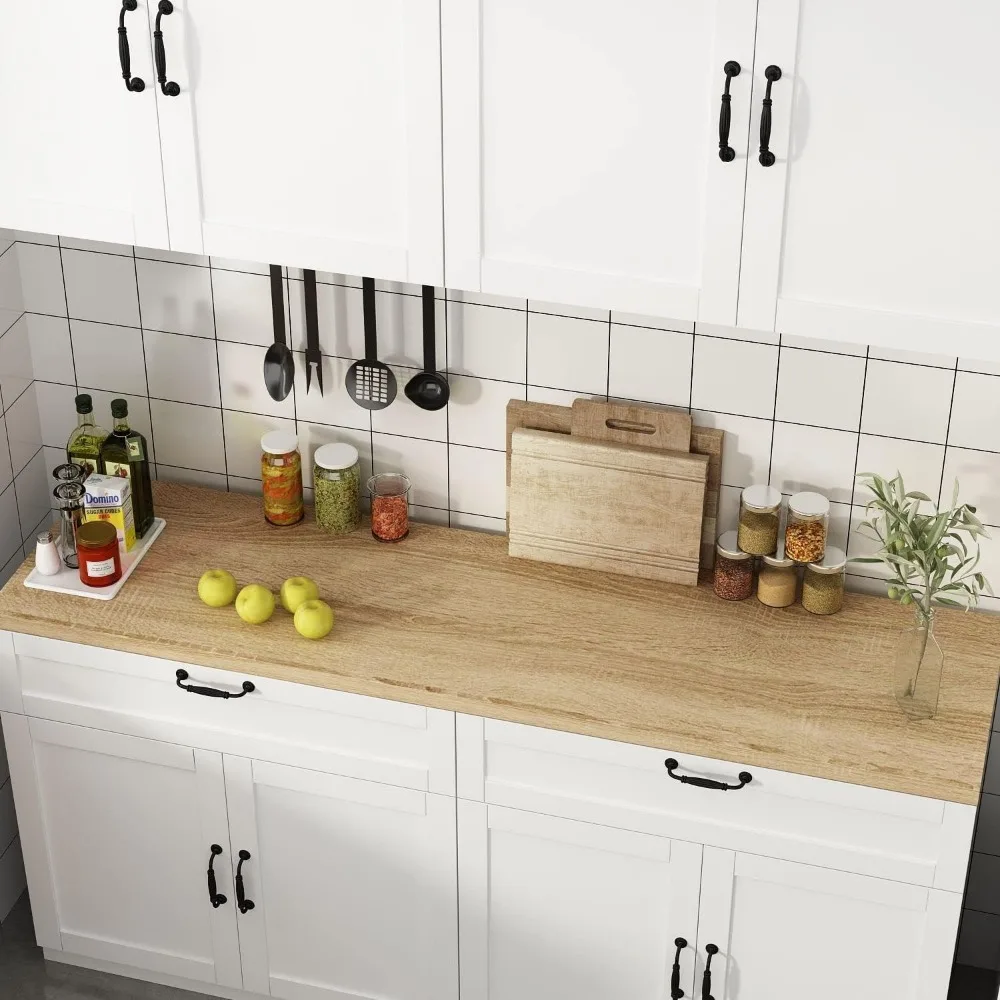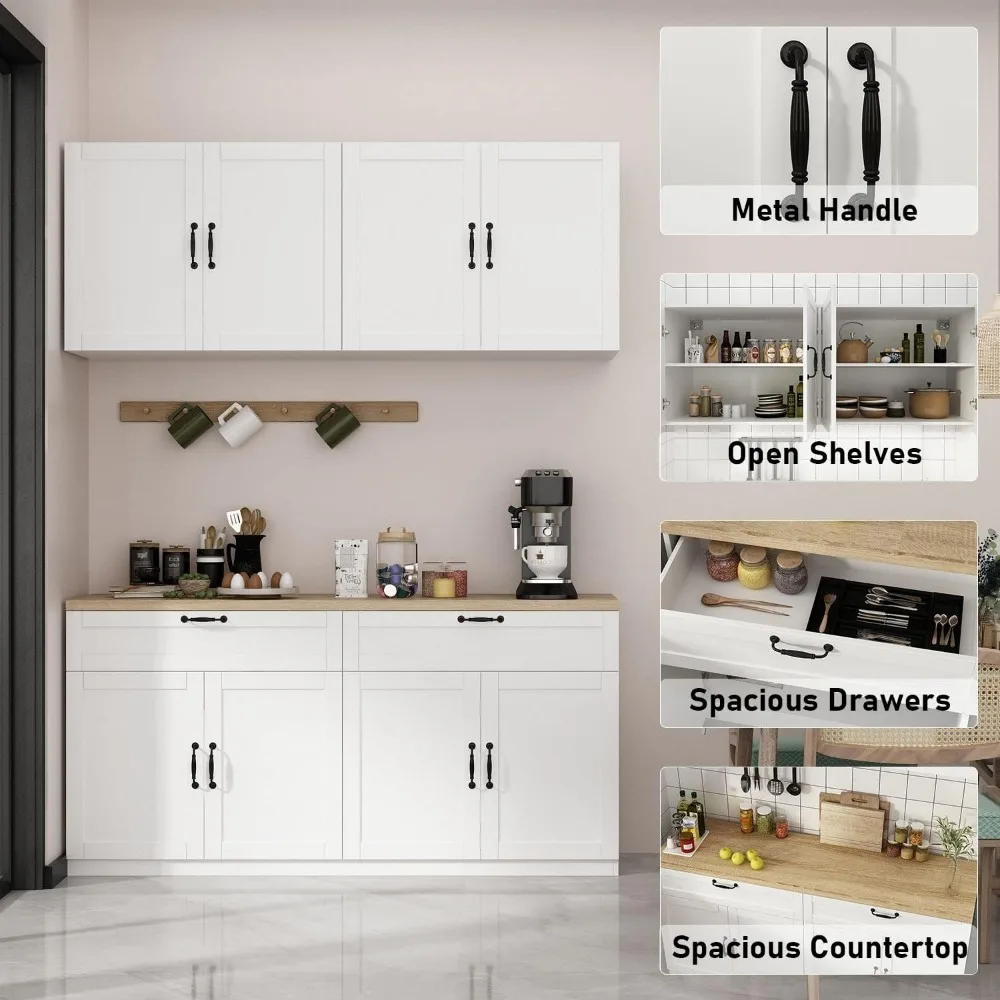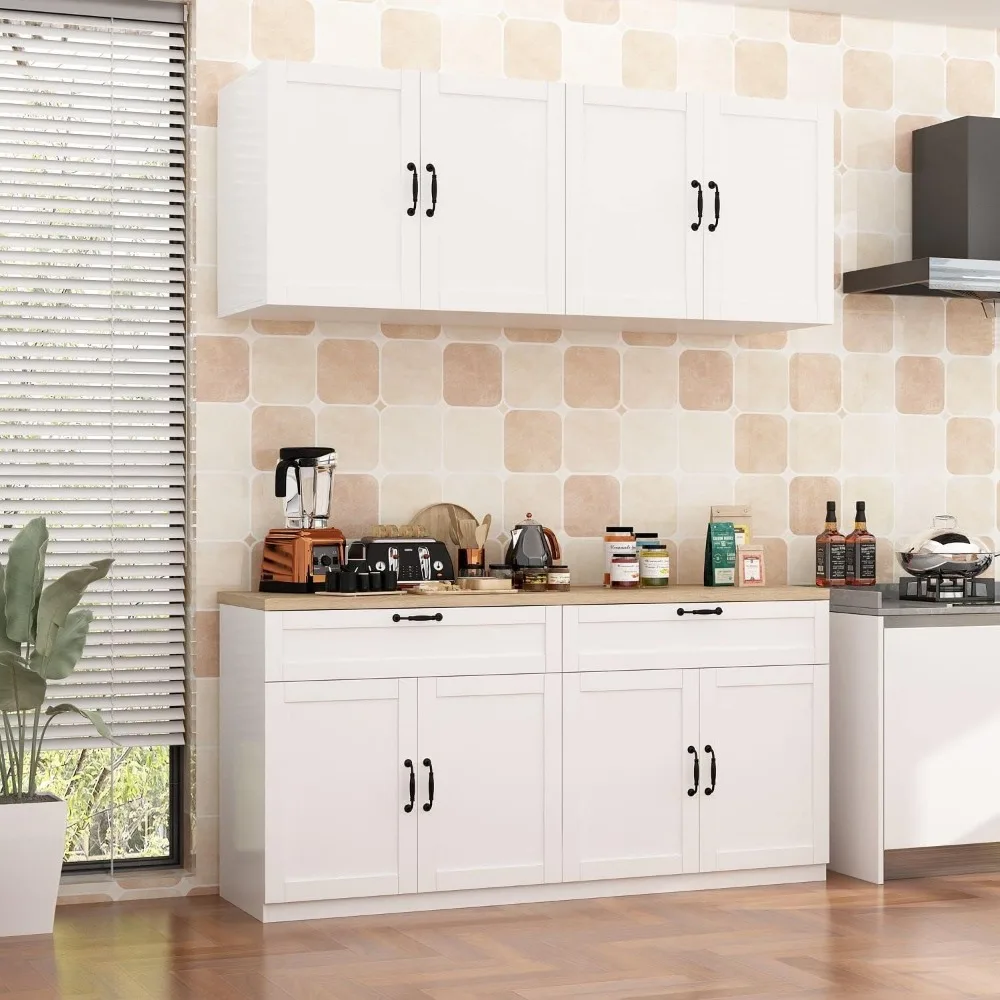Introduction
Painting kitchen cabinets can transform the look of your kitchen without the need for a costly remodel. Many people assume that sanding is a necessary step in this process, but it is possible to achieve a smooth, professional finish without sanding. This guide will walk you through the steps and tips for how to paint kitchen cabinets without sanding. We’ll cover everything from preparation to painting techniques and finishing touches.

Preparation: Setting the Stage for a Flawless Finish
Gathering Your Supplies
Before you begin painting your kitchen cabinets, gather all necessary supplies. This preparation will ensure a smooth process and a beautiful end result. You’ll need the following items:
- Cleaning Supplies: Start with a strong degreaser or all-purpose cleaner to remove grease and grime from your cabinets. You may also need a scrub brush or sponge to tackle tough spots.
- Primer: Choose a high-quality bonding primer that is designed for use on surfaces that don’t require sanding. A good primer will help the paint adhere properly and cover up any stains or old finishes.
- Paint: Select a high-quality latex or acrylic paint that is suitable for cabinetry. These paints are durable and can handle the wear and tear of kitchen use.
- Paint Brushes and Rollers: Use a small, angled brush for corners and detailed areas. A foam roller can help cover larger flat surfaces evenly.
- Painter’s Tape: To protect areas that you don’t want to paint, such as walls, countertops, and hardware.
Cleaning the Cabinets
Proper cleaning is crucial when painting cabinets without sanding. Dust and grease can prevent paint from adhering properly and lead to an uneven finish. Here’s how to clean your cabinets effectively:
- Remove Cabinet Hardware: Take off knobs, handles, and any other hardware from the cabinet doors and frames. This will make it easier to paint and prevent any paint from getting on the hardware.
- Clean the Surface: Use a degreaser or all-purpose cleaner to thoroughly clean the cabinet surfaces. Pay close attention to areas near the stove or sink where grease buildup is common. Use a scrub brush or sponge for stubborn grime.
- Rinse and Dry: After cleaning, rinse the cabinets with water to remove any cleaner residue. Dry the surfaces completely with a clean cloth to avoid any moisture that could interfere with paint adhesion.
Taping and Covering
Once your cabinets are clean and dry, it’s time to protect the areas you don’t want to paint. Here’s how to do it:
- Apply Painter’s Tape: Tape off any areas adjacent to the cabinets, such as walls, countertops, and backsplash. Use painter’s tape to cover edges and create clean lines.
- Cover the Floors: Lay down drop cloths or old sheets on the floor to catch any drips or spills. This will protect your flooring from paint splatters.
- Protect the Countertops: If you can’t remove the countertops, cover them with plastic sheeting or painter’s tape to keep them free from paint.

Priming: The Key to a Smooth Finish
Choosing the Right Primer
Using a bonding primer is essential when painting cabinets without sanding. The primer helps the paint adhere better and creates a smooth surface for the topcoat. Look for a primer that is specifically designed for use on surfaces that do not require sanding. Oil-based primers are often recommended for their strong adhesion, but water-based options can also work well and have the advantage of quicker drying times and easier cleanup.
Applying Primer
- Prepare the Primer: Stir the primer thoroughly before application to ensure an even consistency. If using a can, pour a small amount into a paint tray.
- Use the Right Tools: Apply the primer with a small brush for detailed areas and a foam roller for larger flat surfaces. The foam roller will help achieve a smooth, even coat.
- Apply a Thin Coat: Brush or roll the primer onto the cabinet surfaces in thin, even coats. Avoid overloading the brush or roller to prevent drips and streaks.
- Allow to Dry: Let the primer dry completely according to the manufacturer’s instructions. This step is crucial for a successful paint job. Drying times can vary depending on the primer and environmental conditions.
Checking for Coverage
Once the primer is dry, inspect the cabinets for any missed spots or uneven coverage. Touch up any areas as needed to ensure an even surface for painting. A good primer coat will enhance the adhesion and durability of the paint.
Painting: Applying the Perfect Coat
Selecting Your Paint
Choose a high-quality latex or acrylic paint for cabinets. These paints are durable and can withstand the wear and tear of kitchen use. Consider a semi-gloss or satin finish, which is easier to clean and more resistant to stains than a flat finish.
Painting Techniques
- Prepare Your Workspace: Ensure that your painting area is well-ventilated. Open windows or use a fan to help with airflow and reduce fumes.
- Apply the Paint: Start by applying paint to the edges and detailed areas with a small brush. Use a foam roller to cover the larger flat surfaces. Apply the paint in thin, even layers to avoid drips and brush marks.
- Use Long Strokes: When rolling the paint, use long, even strokes to achieve a smooth finish. Work in sections and overlap your strokes slightly to maintain a consistent look.
- Allow to Dry: Let each coat of paint dry completely before applying the next one. This will ensure a smooth, professional finish. Drying times can vary, so check the paint can for specific recommendations.
Applying Additional Coats
After the first coat of paint has dried, inspect the cabinets for coverage. You may need to apply a second or third coat to achieve the desired finish. Follow the same process as for the first coat, ensuring even coverage and smooth application.
Finishing Touches: Ensuring a Professional Look
Reattaching Hardware
Once the final coat of paint is dry, reattach the cabinet hardware. This is an opportunity to update your hardware if you want a new look. Clean the hardware thoroughly before reattaching it to avoid any paint residue.

Touching Up
Inspect your cabinets for any areas that may need touch-ups. Use a small brush to carefully fix any spots or imperfections. This step ensures that your cabinets have a flawless, professional appearance.
Cleaning Up
After painting, clean your brushes, rollers, and any other tools used. Use soap and water for latex or acrylic paints, and follow the manufacturer’s instructions for cleaning oil-based paints. Remove painter’s tape carefully to avoid peeling any paint.
Maintaining Your Painted Cabinets
To keep your painted cabinets looking their best, clean them regularly with a mild detergent and a soft cloth. Avoid using harsh chemicals or abrasive cleaners that could damage the paint. Periodically check for any signs of wear or damage and touch up as needed to keep your cabinets looking fresh.
Conclusion: Enjoying Your Newly Painted Cabinets
Painting your kitchen cabinets without sanding is a cost-effective way to refresh your kitchen’s appearance. By following these steps—cleaning thoroughly, using a high-quality primer, and applying paint with the right techniques—you can achieve a beautiful, professional finish. The key is to prepare properly, use the right products, and apply the paint carefully. Enjoy your newly updated kitchen and the satisfaction of a DIY project done right!



